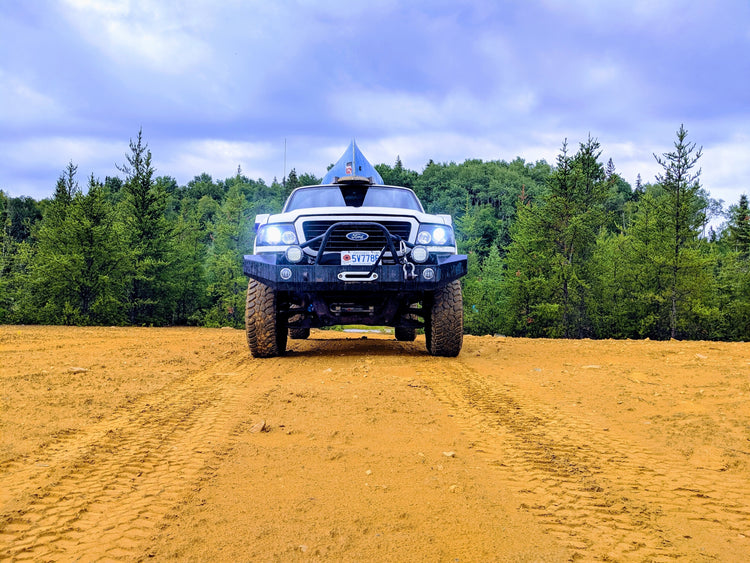Back by popular demand
Since transitioning to the new website, we have not had our tire pressure calculator live on the site.
Having had numerous people reach out asking for it back, we figured it was time.
A little legal mumbo jumbo:
As always - feel free to use this as a reference guide for informational/testing purposes.
We are not responsible for any injuries or damages caused by following this calculator.
Importance and Theory Behind Tire Pressure
Correct tire pressure is one of the most important, yet often the most overlooked components to setting up an overland vehicle or street driven, off-road truck.
If you want a little more information, continue reading here. Otherwise, scroll down to the next section for our tire pressure calculator.
Tire pressure affects the vehicle's handling, tire wear, fuel economy, ride quality, and braking performance.
Under-inflated - Under-inflated tires will cause a decrease in fuel economy due to an increased rolling resistance as well as poor handling.
Tires will also wear faster on the outside of the tread and cause excess heat buildup that could result in catastrophic failure.
Over-inflated - Over-inflated tires can actually increase fuel economy, but the benefits stop there. The minor savings on fuel are outweighed by the faster tire wear.
Tires will wear faster in the center of the tread, and will be more prone to skidding due to the lack of tread contact with the pavement.
Properly inflated - Properly inflated tires optimize tread wear, handling, ride quality and breaking performance.
When installing a tire size that is not the manufacturer's recommended size, the factory tire pressure goes out the window.
All tire manufacturers are required to meet specific load carrying standards set out by the Tire and Rim Association.
Different tire sizes will support different loads at various pressures.
As an example of this consider the following:
A single 37x12.50R17 tire is rated to support 2150lbs at 25psi.
A single 42x14.50R17 tire is rated to support 3085lbs at 25psi.
That represents a 30% difference in load carrying ability when set at the same pressure.
The basic principle at play here is that weight is supported by a specific VOLUME of air. Not pressure.
Therefore, as tire sizes increase, a lower PSI is required to support the vehicle weight when all else is equal.
Calculate Your IDEAL Tire Pressure
In order to get the most out of your tires as described above, the following calculator will provide you with the ideal baseline for your trucks tire pressure with any given tire.
In order to be accurate you must know the weight of YOUR truck front and rear. Simply utilizing the manufacturer's specified weights will not necessarily be accurate - items such as a winch, added skid plates, steel bumpers or rock sliders, cargo and even people, all add significant weight to the vehicle.
The most accurate way to obtain the weight is on a scale at a truck weigh station or recycling center.
If you are unsure of your vehicle weight and unable to obtain an accurate weight - utilize the gross vehicle weight rating (GVWR) provided on the door jamb of your vehicle. This is the maximum weight the vehicle is rated to carry fully loaded.
***Always test tire pressures with the chalk test, or an infrared heat meter. This calculator will give you a very good base tire pressure based on the weight and tire specifications that YOU enter.
***We are not responsible for any injuries or damages caused by following this calculator.
Calculator Instructions
Fill in the required values in the order shown on the calculator:
- Front Weight - Total weight on front axle
- Rear Weight - Total weight on rear axle
- Tire Max Load - Maximum load printed on your tire's sidewall in LBS
- Tire Max Pressure - Maximum pressure printed on your tire's sidewall in PSI
After the required values are entered, you will see a recommended pressure for both the front tires, as well as the rear tires.
These pressures include a 5% safety margin to help account for the unexpected.
As mentioned previously, test your results with the chalk test!
***We are not responsible for any injuries or damages caused by following this calculator. Test results yourself to ensure accuracy.

